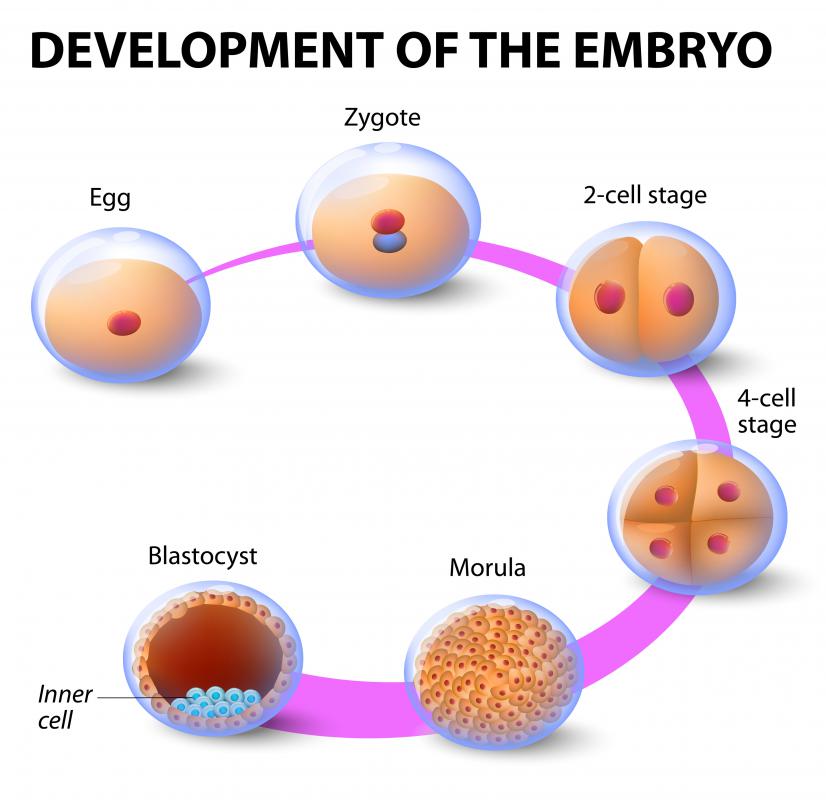At WiseGEEK, we're committed to delivering accurate, trustworthy information. Our expert-authored content is rigorously fact-checked and sourced from credible authorities. Discover how we uphold the highest standards in providing you with reliable knowledge.
What is the Blastula?
The blastula is an early phase of embryonic development that occurs when the fertilized egg has divided multiple times, but before its cells have become differentiated. It consists of approximately 128 cells that form a spherical layer around a central fluid-filled hollow. Another name for the blastula is the blastosphere.
During the first stage of development, the fertilized egg, or zygote, divides quickly in a process called cleavage. The first divisions of the zygote create the morula, which is a solid ball of cells. Then the blastula forms when the dividing cells, or blastomeres, create a layer called the blastoderm surrounding the central cavity, or blastocoel. This transition from the morula to the blastula is referred to as blastulation. It is followed by gastrulation, which forms the next embryonic structure, the gastrula.

In mammals, blastulation occurs about five days after the egg is fertilized, and creates a formation referred to as the blastocyst. This occurs prior to implantation of the embryo in the uterus. The blastocyst is structured differently than the blastula in other animals; it contains a cluster of cells called the embryoblast and an additional external layer of cells called the trophoblast. Later in the development process, these structures will form the embryo and placenta, respectively. The embryoblast is also the source of embryonic stem cells.

The blastulas of whitefish offer an ideal opportunity to view cellular division, or mitosis, and are often used to study the process. In that stage, the cells of the whitefish's embryo are actively dividing and offer many opportunities to see it happening. Sometimes they are studied in conjunction with onion root tip cells, which also divide rapidly, to compare mitosis in animals and plants.

Another area where animal blastulas have been used extensively for scientific purposes is cloning. Some of the earliest successful cloning experiments in the 1950s involved tadpole blastulas. The blastula phase is considered optimal for cloning purposes because the cells have not differentiated yet, meaning they have not developed into any specific type of cell. Another advantage of this stage is that there are a significant number of cells available to use due to the number of divisions that have happened at this point. Earlier stages offer undifferentiated cells, but many less of them are available.
AS FEATURED ON:
AS FEATURED ON:














Discuss this Article
Post your comments